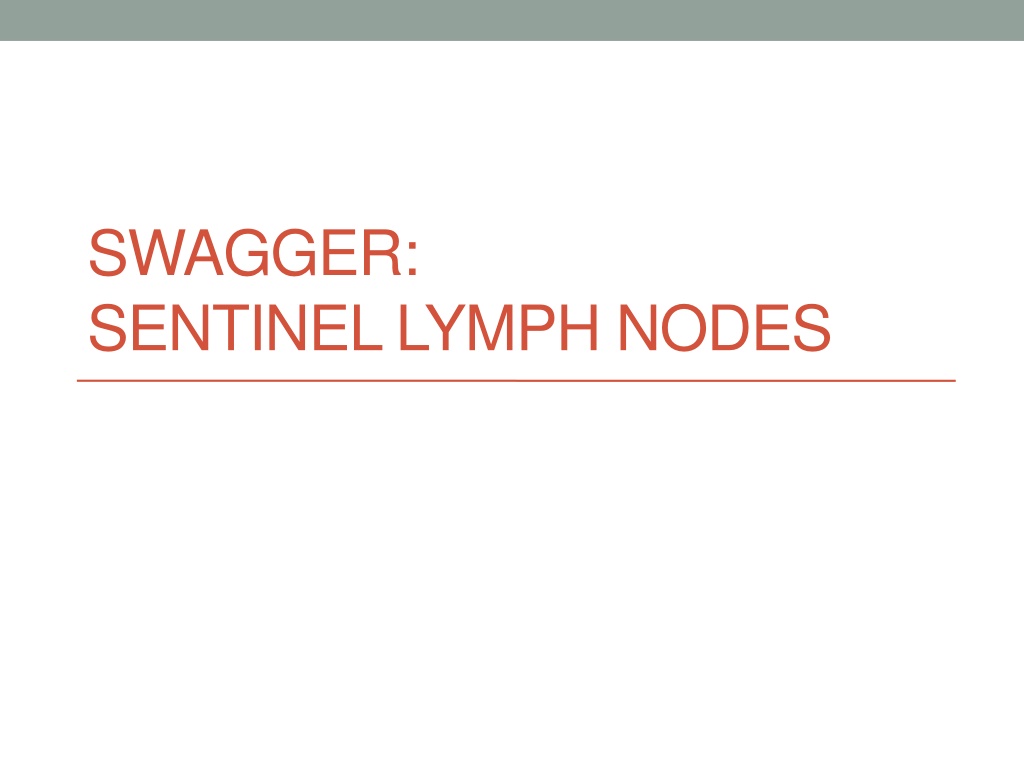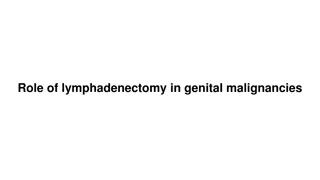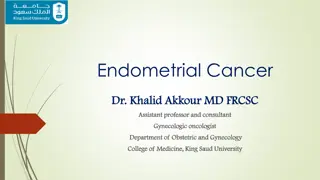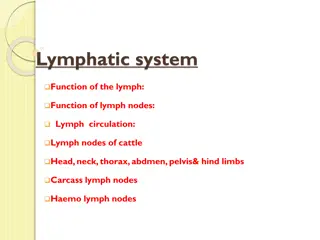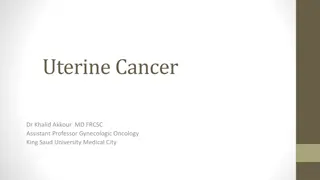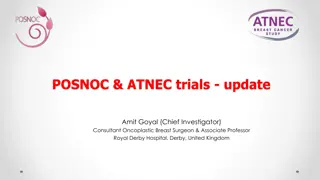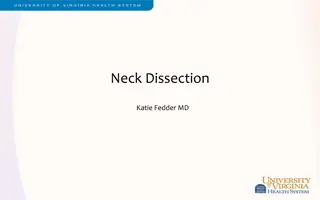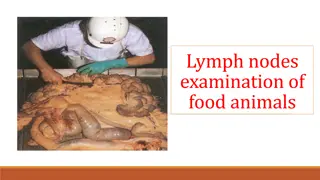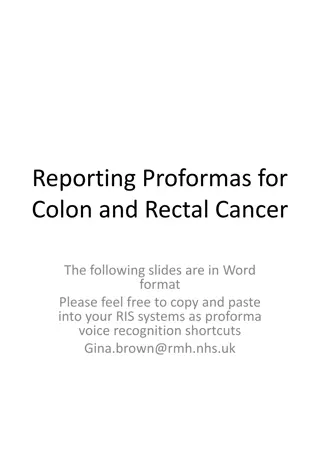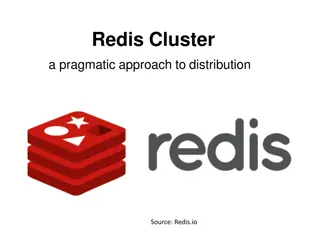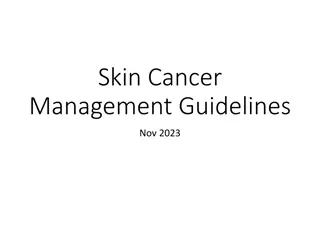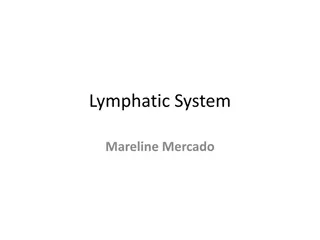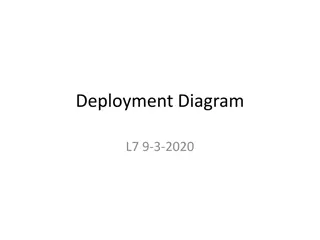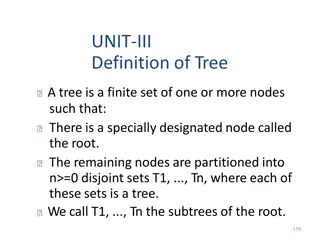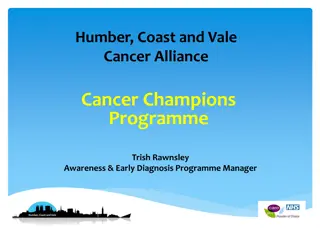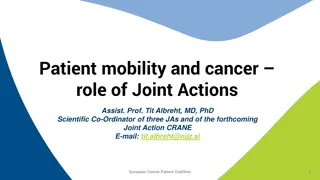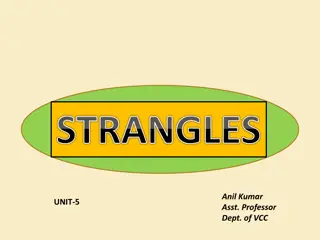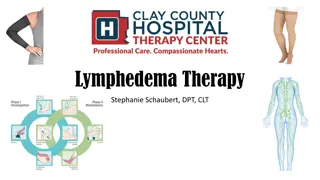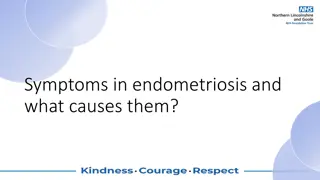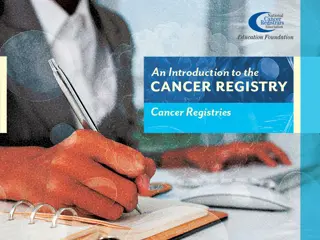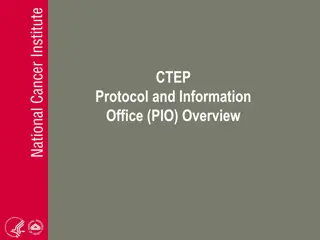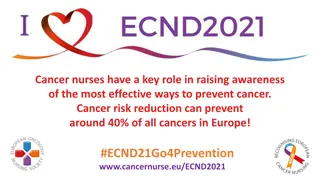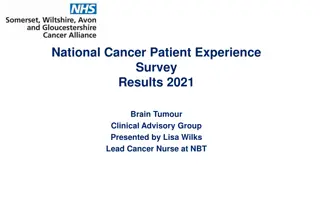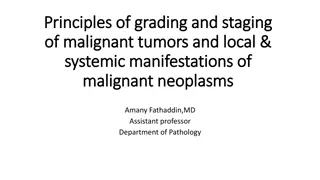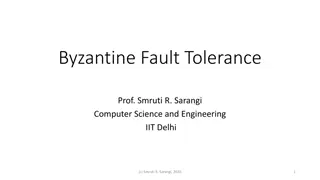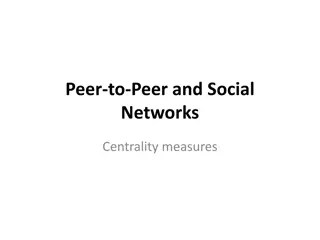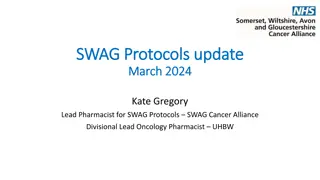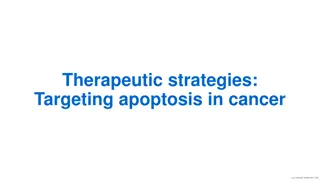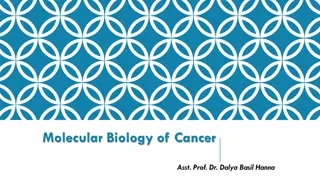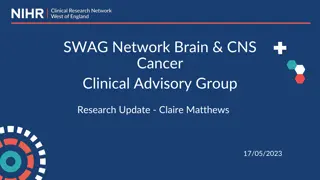Understanding Sentinel Lymph Nodes in Endometrial & Vulval Cancer
Exploration of sentinel lymph node (SLN) practices across SWAGGER preliminary data and guidelines for endometrial cancer, featuring insights from Exeter, Cheltenham, and Bristol cases. Additionally, BGCS guidelines for sentinel nodes in vulval cancer are discussed, emphasizing techniques for detection and staging. The study showcases detection and sensitivity rates, as well as surgical recommendations for different cancer stages.
Download Presentation

Please find below an Image/Link to download the presentation.
The content on the website is provided AS IS for your information and personal use only. It may not be sold, licensed, or shared on other websites without obtaining consent from the author. Download presentation by click this link. If you encounter any issues during the download, it is possible that the publisher has removed the file from their server.
E N D
Presentation Transcript
SWAGGER: SENTINEL LYMPH NODES
Summary Sentinel lymph node practice across SWAGGER Preliminary data: SWAGGER SLN Endometrial cancer BGCS guidelines SLN PORTEC 3
Exeter: SLN for G3 endometrial cancer 72 cases 6 recurrences, 4 deaths Cheltenham: No SLN Full pelvic lymphadenectomy G3 19 cases 12 had full pelvic lymphadenectomy 1/12 (8.3%) positive nodes chemotherapy. Distant recurrence and died
Bristol: 40 cases G2 and G3 9/40 (22.5%) only unilateral SLN mapped 31/40 (77.%%) SLN mapped bilaterally Position of SLN: External iliac 35 Internal iliac 11 Common iliac 4 Obturator 18 Parametrial 3 14 cases G2 1/14 (7%) positive SLN, had chemotherapy 26 cases G3 1/26 (4%) positive SLN, had chemotherapy
Bristol 40 cases SLN G2/3 continued: 6 recurrences 3 local, 3 distant 3 deaths
BGCS guidelines Sentinel nodes Vulval Cancer: Techniques TC99 with blue dye Not enough evidence for ICG Histological ultra-staging for SLN Unifocal tumours <4cm with no suspicious lymph nodes (clinical or examination) SLN standard of care If no SLN detected then full lymphadenectomy
Cervical cancer Techniques TC99 with blue dye or ICG Histological ultra-staging for SLN SLN algorithms can be considered stage 1a1 with LVSI, Stage 1a2-1b1 (tumours less than 2cm) If no SLN detected then full lymphadenectomy
Int J Gynecol Cancer 2017;27: 154Y158) pooled detection rate of 89.2% (95% CI, 86.3Y91.6) pooled sensitivity rate of 90% (95% CI, 88Y92) Tumours<2cm sensitivity 96-100%
Endometrial cancer: Cervical injection for SLN Techniques TC99 with blue dye or ICG Histological ultra-staging for SLN Can be considered in high risk endometrial cancer (clear cell, serous, grade 3 endometrioid, carcinosarcoma) If no SLN detected then full lymphadenectomy
Lancet Oncol 2017; 18: 38492. 10 centres in USA Any grade, apparent stage 1 endometrial cancer ICG dye used, injected into cervix PAN 58% 293/340 (86%) successful mapping 177/340 (52%) bilateral mapping SLN
Results The sensitivity was 97 2% (95% CI 85 0 100; McNemar s p=1). False-negative rate 3% Negative predictive value of 99 6% (95% CI 97 9 100). Isolated Para-aortic SLN detected 3/340 (<1%) 6 patients (17%) had positive SLN outside conventional lymphadenectomy
Lancet Oncol (july) 2019; 20: 127385 Between 2006-2013 660 women randomised stage I endometrioid grade 3 cancer with deep myometrial invasion or lymphovascular space invasion, or both; stage II or III disease; or stage I III disease with serous or clear cell histology Receive radiotherapy alone (48 6 Gy in 1 8 Gy fractions given on 5 days per week) or Chemoradiotherapy (two cycles of cisplatin 50 mg/m given intravenously during radiotherapy, followed by four cycles of carboplatin AUC5 and paclitaxel 175 mg/m given intravenously
5-year overall survival was 814% (95% CI 772858) with chemoradiotherapy versus 76 1%(71 6 80 9) with radiotherapy alone (adjusted hazard ratio [HR] 0 70 [95% CI 0 51 0 97], p=0 034)
5-year failure-free survival was 765%(95% CI 715807) versus 69 1%(63 8 73 8; HR 0 70 [0 52 0 94],p=0 016).
stage III endometrial cancer, 5-year overall survival was 78.5%(95% CI 72.285.4) with chemoradiotherapyversus 68.5%(61.2 76.7)with radiotherapy alone (HR 0 63 [95% CI 0.41 0.99]; p=0.043)
In women with stage III disease, 5-year overall survival was 83 8% (95% CI 78 4 89 5) with chemoradiotherapy versus 82 0% (95% CI 76 5 87 7) with radiotherapy alone HR 0 84 [95% CI 0 52 1 38]; p=0 50), 5-year failure-free survival was 81 3% (95% CI 74 7 86 3) with chemoradiotherapy versus 77 3% (95% CI 70 5 82 7) with radiotherapy alone (HR 0 87 [95% CI 0 56 1 36]; p=0 54;
5-year overall survival was 714%(95% CI 601847) with chemoradiotherapy versus 52 8%(40 6 68 6) with radiotherapy alone (HR 0 48 [95% CI 0 24 0 96]; p=0 037) 5-year failure-free survival was 59 7%(95% CI 45 1 71 6) with chemotherapy versus 47 9%(33 9 60 6) with radiotherapy alone (HR 0 42 [95% CI 0 22 0 80]; p=0 008
Results - recurrences Distant metastases 78 of 330 women (5-year probability 21 4%; 95% CI 17 3 26 3) in the chemoradiotherapy group versus 98 of 330 (5-year probability 29 1%; 24 4 34 3) in the radiotherapy-alone group (HR 0 74 [95% CI 0 55 0 99]; p=0 047). Isolated vaginal recurrence was the first site of recurrence in one patient (0 3%; 95% CI 0 0 2 1) in both groups (HR 0 99[95% CI 0 06 15 90]; p=0 99) isolated pelvic recurrence was the first site of recurrence in three women (0 9%[95% CI 0 3 2 8]) in the chemoradiotherapy group versus four (0 9% [95% CI 0 3 2 8]) in the radiotherapy-alone group (HR 0 75 [95% CI 0 17 3 33]; p=0 71)
Result adverse side effects At 5 years, only one grade 4 adverse event (ileus or obstruction) was reported (in the chemoradiotherapy group). grade 3 adverse events did not differ significantly between the two groups, occurring in 16 (8%) of 201 women in the chemoradiotherapy group versus ten (5%) of 187 in the radiotherapy-alone group (p=0 24). grade 3 adverse event was hypertension (in four [2%] women in both groups). grade 2 or worse adverse events were reported in 76 (38%) of 201 women in the chemoradiotherapy group versus 43 (23%) of 187 in the radiotherapy-alone group (p=0 002). Sensory neuropathy persisted more often after chemoradiotherapy than after radiotherapy alone, with 5-year rates of grade 2 or worse neuropathy of 6% (13 of 201 women) versus 0% (0 of 187). No treatment-related deaths were reported.
